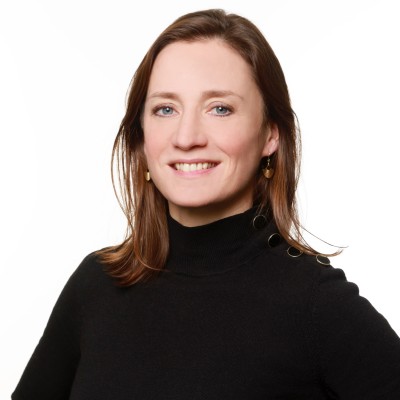Building a successful data business – lessons from McKinsey

How do organizations tap into the revenue benefits of creating external data products and services at scale? Based on a new report from consultants McKinsey, we explore the foundations required to industrialize the delivery of successful external data products.
Every business is now a data business. This could be through using information internally to drive efficiency and improve decision-making, externally with the public and partners to increase transparency and collaboration, or by monetizing data through data products and services.
However, while launching data products and services can create completely new sources of revenues, successfully building these new businesses takes much more than simply offering data to the world. As a new report from McKinsey explains, organizations need to understand the opportunities and challenges fully, and put in place the right strategy and data infrastructure to unleash the potential of data products. Drawing on the McKinsey report, this blog explains more about how to put in place the building blocks required for success.
Understanding the data product opportunity
Businesses are generating more and more data across their operations. They know these volumes of information can deliver value externally as well as internally, helping to differentiate against rivals and to engage completely new customers. In fact, according to McKinsey’s article, entitled From raw data to real profits: A primer for building a thriving data business, 36% of senior leaders said that they expect to create new data, analytics or AI-based businesses in the next five years. 28% are looking to use data from connected Internet of Things (IoT) devices as a further source of new revenues. Altogether, McKinsey predicts that the value potential from data and analytics will reach $17.7 trillion over the coming years.
Why has the opportunity developed?
Four technology developments are enabling organizations to free their data and think about creating new value from their information:
More advanced data tools
Organizations have invested heavily in their data stacks, implementing more sophisticated technology and tools that enable them to efficiently collect, process, manage, share, and reuse data across the business. This helps break down silos, particularly when combined with comprehensive data governance processes to ensure data is reliable, high quality and compliant.
The rise of generative AI (gen AI)
A large percentage of data is unstructured, which previously made it hard to standardize, reformat and share without investing in expensive tools and processes. The rise of gen AI, particularly of Large Language Models (LLMs) trained on internal data, makes it much simpler and cost-effective to structure and reuse such data. This makes it easier and more efficient to share, especially given the rise of low-code and no-code analytics platforms that provide tools for non-specialists to analyze data, without requiring technical skills.
Increased access to real-world data
Internet of Things sensors have dramatically dropped in price, accelerating their adoption across all types of organization, from manufacturing, utilities, and transport to smart cities. This allows everyone to capture and gather real-time data from the world around them much more affordably, feeding business applications and dashboards with accurate, timely and reliable information.
Growing use of internal data products
Chief Data Officers (CDOs) understand that for data to deliver value it has to meet specific business needs. Simply providing raw data is unlikely to do this, meaning it needs to be turned into data assets and data products that employees can access and reuse without requiring specialist skills or training. Many organizations have therefore already built processes and capabilities to industrialize the creation of internal data products – these provide strong foundations for selling external data services to customers and the wider market.
The challenges to building a data product business
Given the size of the opportunity, it is natural that organizations are exploring how they can create data businesses that tap into these new revenues. However, simply making data available externally is not enough – to succeed in a highly competitive world data products have to be painstakingly designed to meet a specific market need if they are to gain traction.
McKinsey outlines three potential strategies to follow to drive success, each with their own requirements:
Create an industry standard
Become seen as the go-to source for data products in a specific area. This requires both scale in terms of data volumes, and uniqueness, offering something that no-one else can. Achieving this means making significant investments in data, potentially buying in information to bolster your offering, and seizing first mover advantage. The potential opportunities are significant, as network effects make your organization the automatic choice for data products in a specific area.
Harness insights from an engaged user base
Data collected from users, such as customers, can provide unique insights that deliver value for other organizations. This could be based around user behavior or their physical location for example. Combining this information with external reference data helps give context to information, enabling companies to create unique, integrated data products for the market. Ensuring that confidentiality is respected and that products are compliant with regulations such as the GDPR is vital, with data anonymized to protect personal information.
Turn organizational know-how into a product
Internal knowledge and capabilities can be productized to create new services and revenue streams. This could be making internal data-driven dashboards or tools available to the wider market or using IoT sensors to create new “as a service” business models. Delivering such data products requires businesses to balance the need to preserve their own competitive advantage and differentiation with the potential new revenues they provide.
Critical considerations for your data product strategy
Launching a successful data product strategy requires time, investment and a thorough understanding of market needs. Focusing on four areas helps unlock lasting success:
Increase the maturity of your data products
Generally, the more mature your data offering, the higher the value it provides, and the greater the revenues it delivers. Essentially, raw data is only going to be of use to a limited audience, but packaging information into understandable and usable data products will increase value and potential income.
For example, Birdz by Veolia designs and provides innovative IoT products to support the sensing and monitoring needs of cities, regions and industries in areas as diverse as analyzing the quality of drinking and river water, and monitoring fire hydrant system performance and biodiversity. Rather than just supply raw data to its customers, it has created interactive dashboards and data visualizations to transform the data produced by its IoT sensors into actionable insights and information that customers can use for decision-making. These data products help clients and open up new revenue opportunities for Birdz itself.
Focus on product delivery through a data marketplace
Clearly, for data products to be used, they need to be easily available to potential customers. Adopting a data marketplace that provides access to all an organization’s data products is therefore vital. This has to be intuitive, comprehensive and easy to use, with an experience that is similar to consumer e-commerce marketplaces. Users have to be able to quickly discover relevant data products and access them through visualizations such as dashboards and maps, or via APIs to make them a core part of their workflows.
Technology company Schneider Electric is focused on harnessing data to help its customers and partners drive greater energy efficiency and sustainability. To enable this it has launched Exchange, a partner data services marketplace. This brings together a wide variety of resources, including data products, APIs, tools, and analytics in a single location, providing new, data-driven services that deepen collaboration and enable innovation.
Put in place a modern data stack
Industrializing the creation and sharing of data products requires a flexible, scalable and robust data stack. It has to be able to manage end-to-end data flows to deliver reliable, high-quality data products to customers via data marketplaces. To deliver this, organizations need to invest in both infrastructure and data and business skills to ensure they can design and provide relevant products that meet customer requirements.
Focus on governance and security
Making data available externally can be seen as a business risk, especially around intellectual property, privacy, and data ownership. If data is derived from customer interactions it has to be anonymized to avoid potential leaks of confidential or personally identifiable information. All of this means that organizations have to put in place strong governance processes around the data products they create, ensuring that data is accurate, protected and compliant with regulations. Licenses have to be clear about how data can be used by customers and their abilities to create their own products and services based on it.
The greater collection and harnessing of data brings enormous opportunities for organizations to improve internal efficiency, increase transparency and create new data-driven revenue streams. However, as the McKinsey report points out, a long-term data product strategy requires businesses to put key building blocks in place first to drive success.
Interested in creating your own external data marketplace? Speak to our experts to find out how we can help maximize value from your data.

To remain competitive in a rapidly changing market, Schneider Electric needed to find solutions to make the organization’s data understandable and shareable with its partners. After setting up a data sharing portal (the Data Library) to widen access to data internally, Schneider Electric launched Exchange, its marketplace of data and digital products. Learn more on this data services marketplace with our Success Story !

In this article, we take a closer look at Dashboard as a Service (DaaS) solutions. These fast-growing data services are now generating numerous benefits for both the organizations that implement them and their wider ecosystems and customers.
